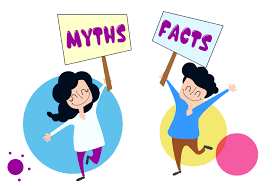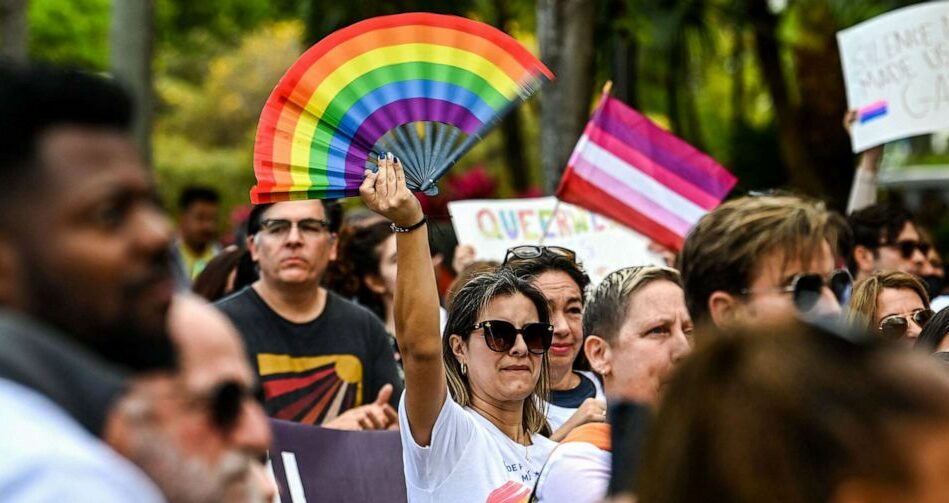What does heterosexual mean? This is a question that many people don’t know the answer to. Heterosexuality is defined as “the romantic or sexual attraction between two people of different genders.” In other words, it is when someone is attracted to someone else who has a different gender than themselves. This can be confusing for some people, especially since there are so many different terms and definitions related to sex and relationships these days. In this blog post, we will discuss what heterosexuality means, and some things you need to know about it!
Contents
What Does Heterosexual Mean?
 A heterosexual is defined as a person who is sexually attracted to people of the opposite sex. It is the most common sexual orientation. And refers to people who are exclusively attracted to members of the other gender. Heterosexuality is not a choice, but rather something that someone is born with. People who are heterosexual can sometimes experience attraction to people of the same sex. But this does not mean they are gay or bisexual.
A heterosexual is defined as a person who is sexually attracted to people of the opposite sex. It is the most common sexual orientation. And refers to people who are exclusively attracted to members of the other gender. Heterosexuality is not a choice, but rather something that someone is born with. People who are heterosexual can sometimes experience attraction to people of the same sex. But this does not mean they are gay or bisexual.
Though the meaning of heterosexual is easily defined, there are still many people who do not understand what it means. This is likely due to the fact that heterosexuality is seen as the “normative” sexuality. Defined as being attracted to persons of the opposite sex, heterosexuality is one of the most common sexual orientations.
Despite its prevalence, there are still many myths and misconceptions about heterosexuality. Some people believe that being heterosexual means that you must be monogamous, while others think that it’s only about sex. In reality, there is no single definition of heterosexuality – it can mean different things to different people.
What History Traces Back To Heterosexuality?
There is no one answer to this question because different cultures and religions have different histories when it comes to heterosexuality. In some cases, it appears that heterosexuality has been around for as long as humans have been around. In others, it seems that the idea of heterosexuality is a more recent invention.
However, the studies suggest that there is no one origin story for heterosexuality. In fact, it is likely that the term “heterosexual” was not even used until the late 19th century. Before that, people who engaged in sexual activities with someone of the opposite sex were simply called “normal.” In the 20th century, the term began to be used in a more clinical sense, to refer to sexual orientations that were not homosexual.
Heterosexuality is one of the three main classifications of sexual orientation, along with homosexuality and bisexuality. It describes people who are attracted exclusively to people of the opposite sex. Heterosexuality is the most common sexual orientation in the world.
Moreover, they typically prefer partners of the opposite sex. Heterosexual relationships can take many different forms, from casual flings to committed marriages.
What Is Compulsory Heterosexuality?
 Compulsory heterosexuality is the idea that heterosexuality is the only natural and normal sexual orientation. This means that people who are not heterosexual are seen as abnormal or even deviant.
Compulsory heterosexuality is the idea that heterosexuality is the only natural and normal sexual orientation. This means that people who are not heterosexual are seen as abnormal or even deviant.
Compulsory heterosexuality is a tool used by those in power to keep heteronormativity (the belief that heterosexual relationships are the only normal kind) in place. It’s a way of saying that anything else is wrong and must be fixed.
Compulsory heterosexuality also contributes to the erasure of LGBTQ+ people. Because it’s seen as the default, anything else is ignored or pushed to the side. This can lead to discrimination and violence against LGBTQ+ people.
It’s important to challenge compulsory heterosexuality and fight for queer rights! We need to make space for all sexual orientations and break down the barriers that keep us from being our true selves.
Common Examples Of Compulsory Heterosexuality
There are some common examples of compulsory heterosexuality.
- One example is the assumption that a wedding should have a bride and a groom. If someone doesn’t fit into this traditional gender role, they may be considered “odd” or “queer.”
- Another example is the way that popular culture often portrays heterosexual relationships as the most desirable and normal option. Movies, TV shows, and commercials often depict heteronormative relationships as being more loving and fulfilling than any other type of relationship. This can make it difficult for people who don’t identify as heterosexual to feel accepted or understood.
- Sexual education books discuss heterosexuality to a great extent.
- There is also a common belief that everyone can be heterosexual and it is far better than being a homosexual.
However, almost every one includes in the definition of heterosexuality that it is between a man and a woman. Also, compulsory heterosexuality is known as homophobia, heterosexism, and heterosexual privilege.
Difference Between Heterosexuality, Homosexuality, and Other Sexualities
There is a lot of confusion about the different terms used to describe sexual orientations. Here is a breakdown of the most common ones:
Heterosexuality
This describes someone who is sexually attracted to people of the opposite sex. It is the distinct form of sexual orientation that is most common in the world. Most people who are heterosexual generally feel romantic or emotional attraction towards people of the opposite sex. This term can also be used to describe someone’s gender identity which is male or female. There isn’t anything wrong with being heterosexual and it is considered to be the “default” sexual orientation for most people.
Signs of identity heterosexuality

- One of the most obvious is their attraction to people of the opposite sex.
- Heterosexuality can also be defined as a choice in clothing – typically, heterosexuals will dress in a way that is congruent with societal gender norms.
- Additionally, they may exhibit certain mannerisms or behaviors that are traditionally associated with their gender. For example, men may be more aggressive and outspoken, while women may be more gentle and coy.
- Lastly, heterosexuals often have opposite-sex friends and romantic partners.
This is not to say that everyone who exhibits these signs is automatically heterosexual, but it is a strong indicator. If you’re unsure about someone’s sexuality, simply ask them! The vast majority of people are more than happy to talk about their romantic lives.
Homosexuality
This is defined as being sexually attracted to someone of the same gender. It is a term used to describe people who are not heterosexual. Also, homosexual relationships and activities are typically referred to as “gay” and also as “lesbian.” It is important to note that not everyone who identifies as homosexual necessarily engages in sexual activity with someone of the same gender.
More often, homosexuals are thought of as being people who are exclusively interested in their own sex. This is not always the case, however. Some homosexuals may be attracted to people of their own gender, some may be attracted to both genders, and others may not be particularly interested in sex at all.
Other Sexualities
There are many more types of sexualities, such as bisexual, asexual, and pansexual. However, heterosexuality is the most common sexual orientation and is when someone is attracted to people of the opposite sex.
Bisexual is when a person is attracted to people of both sexes. They are not limited to just one gender.
Asexual is when a person does not experience sexual attraction to anyone. They may still engage in sexual activity, but it is not for the purpose of experiencing pleasure.
Pansexual is when a person is attracted to all genders. This includes people who identify as male, female, transgender, and nonbinary.
Myths And Misconceptions About Heterosexuality
 There are numerous myths and misconceptions about heterosexuality. Some people believe that heterosexuals are all “straight-laced” and boring, while others think that they are all promiscuous and cheaters. The truth is that there is no one definition of heterosexuality – just as there is no one definition of any other sexual orientation.
There are numerous myths and misconceptions about heterosexuality. Some people believe that heterosexuals are all “straight-laced” and boring, while others think that they are all promiscuous and cheaters. The truth is that there is no one definition of heterosexuality – just as there is no one definition of any other sexual orientation.
- A common myth about heterosexuality is that it is a choice. This is not true. Heterosexuality is not a choice, but rather something that someone is born with.
- Some people believe that heterosexuals are “normal” or “default” while others believe that being heterosexual is a choice. Neither of these is true.
- Some people think of it as a disease and something that can be cured or changed. However, it’s completely a false conception.
- People still believe that only men can be heterosexual and that women who are attracted to other women must be lesbians.
All of these myths and misconceptions are wrong. Heterosexuality is simply the attraction between two people of the opposite sex. It is not a choice and it cannot be cured or changed. And, men and women can both be heterosexual, and there is no single definition of what it means to be heterosexual.
Heterosexuality is one of the most common sexual orientations in the world, and there is no shame in being heterosexual. If you are attracted to someone of the opposite sex, you are heterosexual.
Conclusion
To conclude, it is important to understand what heterosexuality means. People need to understand that heterosexuality is not a choice. And, it is not a disease that needs to be cured or changed. It is simply the attraction between two people of the opposite sex. That is it, and there is no need to complicate the topic.
And, it is normal that you do not have to feel shame or embarrassment. Because heterosexuality is to normal sexuality of human beings. Treat yourself as a normal human being if you are heterosexual and be positive about it. Thanks for reading!
A Word From Therapy Mantra
Your mental health — Your psychological, emotional, and social well-being — has an impact on every aspect of your life. Positive mental health essentially allows you to effectively deal with life’s everyday challenges.
At TherapyMantra, we have a team of therapists who provide affordable online therapy to assist you with issues such as depression, anxiety, stress, workplace Issues, addiction, relationship, OCD, LGBTQ, and PTSD. You can book a free therapy or download our free Android or iOS app.


